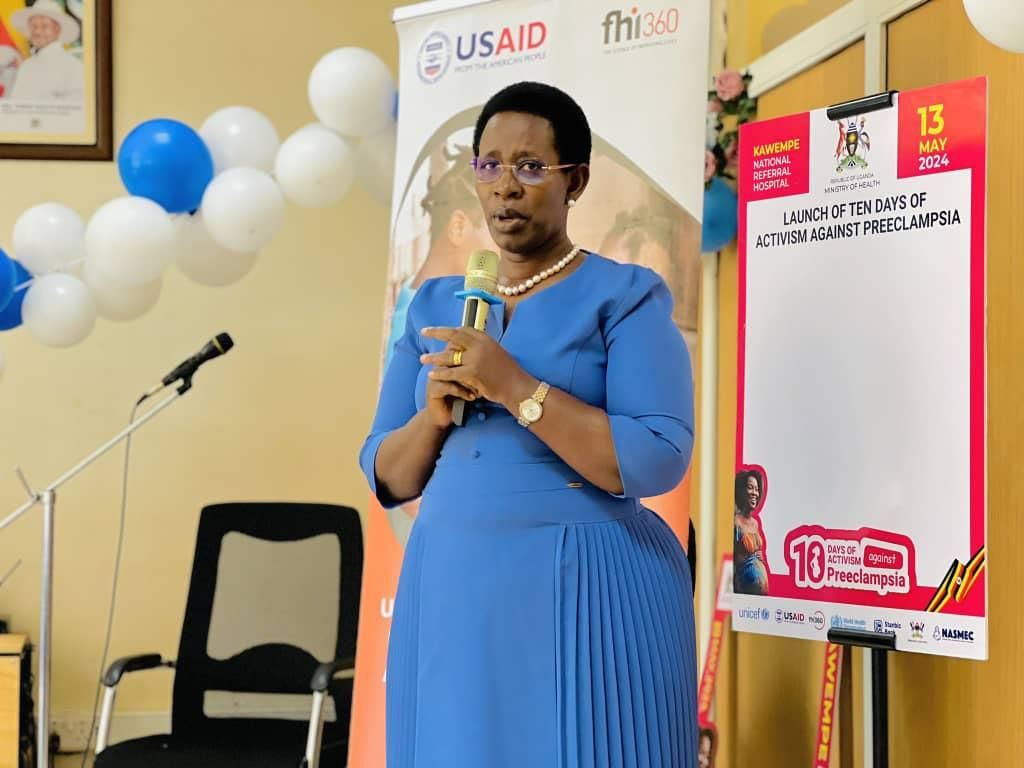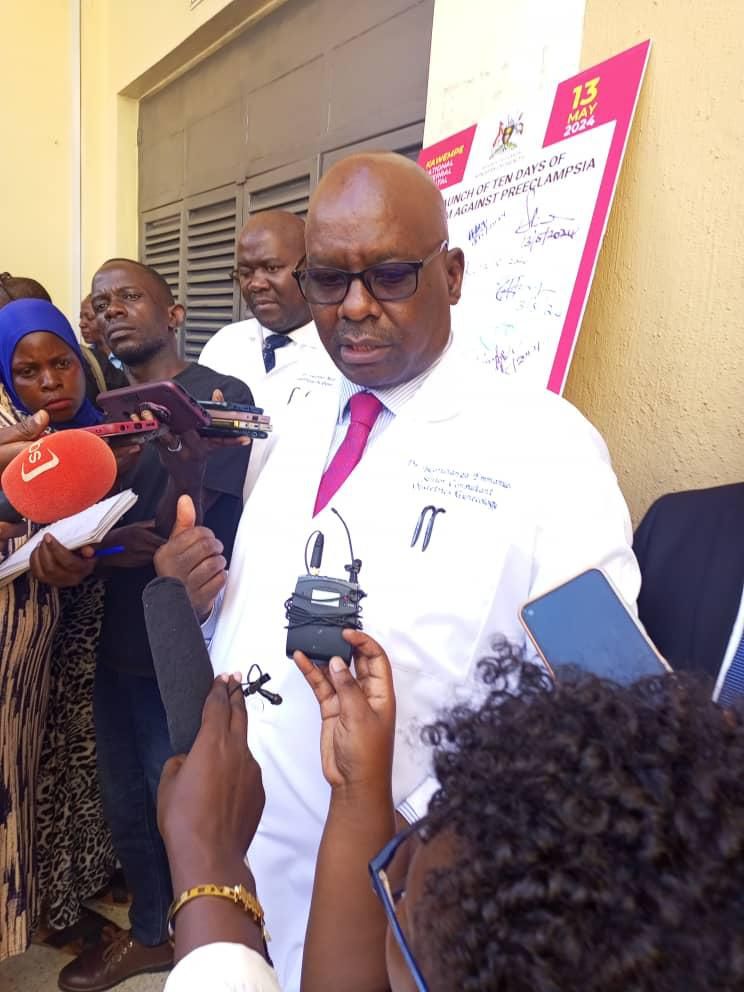Eclampsia now tops maternal death causes in Kampala; new campaign launched
)
The campaign was launched at Kawempe National Referral Hospital where the condition – in which a pregnant or postpartum person suddenly experiences seizures, – is now the leading cause of maternal deaths.
According to Dr Diana Atwiine, the Permanent Secretary Ministry of Health, Preeclampsia and Eclampsia have leapfrogged Postpartum Haemorrhage (PPH) to become the leading killer of pregnant mothers at the hospital.
The hospital receives many referral cases of women with the condition mostly from lower-level health facilities in Kampala, surrounding districts and other parts of the country.

Dr Atwiine said the new campaign will involve educating the mothers coming to hospitals, but also sending medical experts to churches, markets, and other public gatherings to educate the people.
The campaign supported by the Corporate Society for Safe Motherhood will last 10 days.
Dr Atwiine says the problem has been exacerbated by traditional and religious beliefs as well as mothers not taking antinatal care from health facilities.
“We know that most people never get to know that they have this illness unless they come to the hospital. Yet we can easily prevent complications if they come early and start treatment,” she said.

Dr Emmanuel Byaruhanga, the Director of Kawempe National Referral Hospital during the campaign launch, recounted how they recently received an Eclampsia patient, whose condition had been misunderstood as a demonic attack because she was having seizures.
The patient spend days being prayed for in church and by the time they brought her to the hospital, it was too late.
At Kawempe Hospital, Dr Byaruhanga says, they have set up a special eclamptic ward of 8 beds next to the maternity ward.
On average, the hospital receives 150 patients with this condition per month.

Preeclampsia and eclampsia are serious but treatable conditions that can develop during pregnancy. While both involve high blood pressure, they differ in severity. Here's a breakdown of each condition:
Preeclampsia
- Characterized by high blood pressure and signs of problems in other organs, typically the kidneys, after 20 weeks of pregnancy.
- Symptoms may include:
- Severe headaches
- Vision problems (blurring, seeing spots)
- Upper right abdominal pain
- Nausea and vomiting
- Sudden swelling in the face and hands
Eclampsia
- A severe complication of preeclampsia, marked by seizures or coma.
- Can occur before, during, or after childbirth.
- Warning signs before seizures might include:
- Severe headaches
- Changes in vision
- Mental confusion
Causes and Risk Factors
The exact causes of both conditions are unknown, but risk factors include:
- First pregnancy
- Age (very young or old)
- Multiple pregnancies (twins, triplets)
- Underlying health conditions like high blood pressure, diabetes, or kidney disease
- Previous history of preeclampsia
Importance of Prenatal Care
Regular prenatal checkups are crucial for early detection and management of preeclampsia. Doctors monitor blood pressure, urine protein levels, and other factors to assess risk.
Treatment
The only cure for both conditions is the delivery of the baby. However, depending on the severity and gestational age, treatment approaches may differ:
- Medications: Medications like magnesium sulfate can help control blood pressure and prevent seizures.
- Early Delivery: In severe cases, early delivery may be necessary to protect the health of both mother and baby.
Long-Term Effects
Early diagnosis and treatment can significantly reduce complications. However, women with preeclampsia are at a slightly increased risk of developing heart disease and stroke later in life.
)
)
)
)
)
)
)